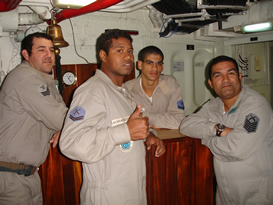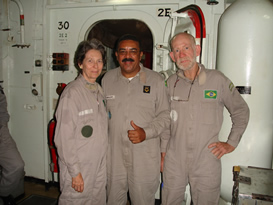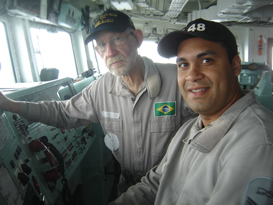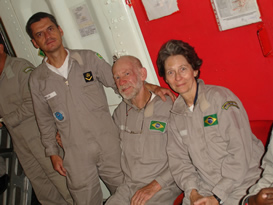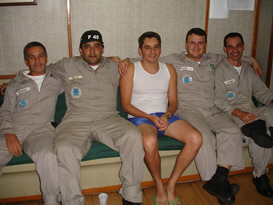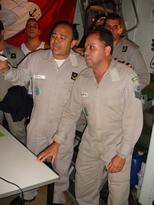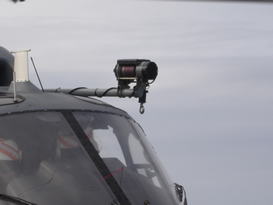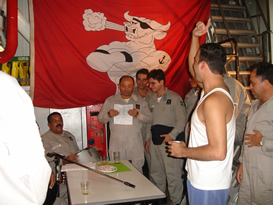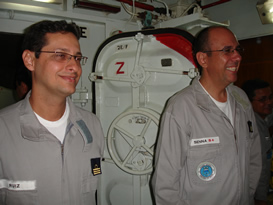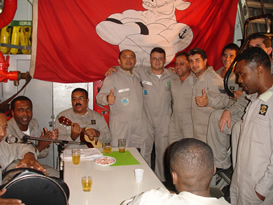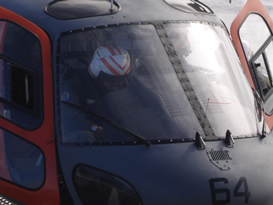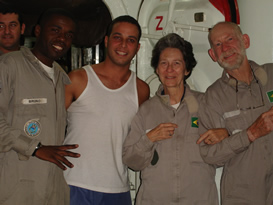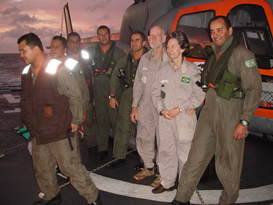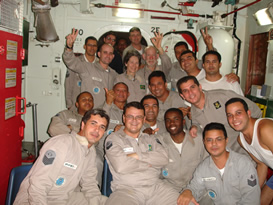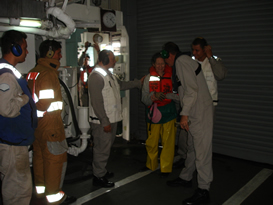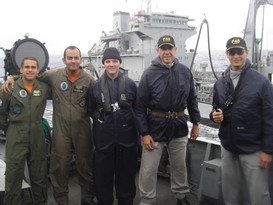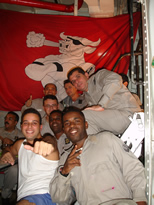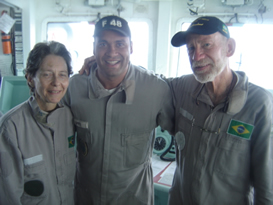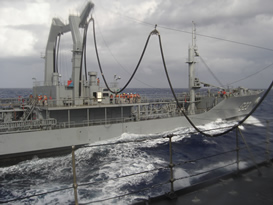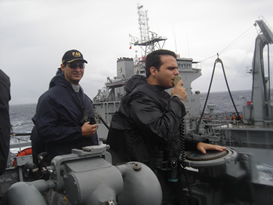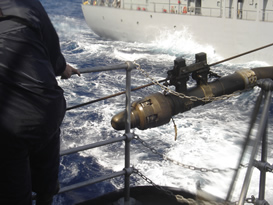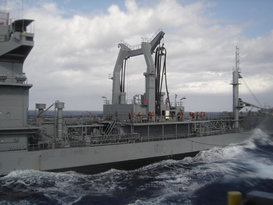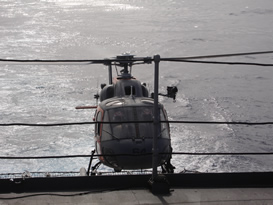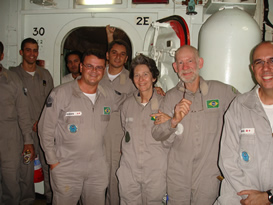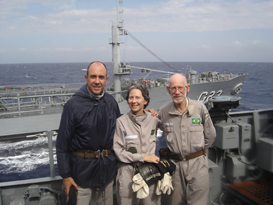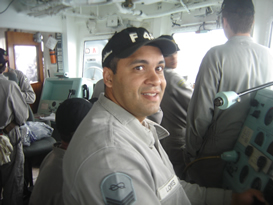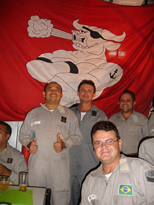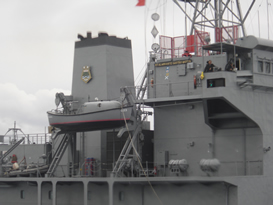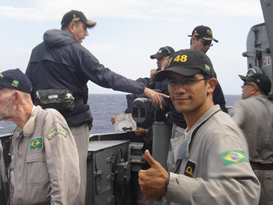Total of 850 miles. A detour taken that we would not have missed. Our only regret that we did not stay longer. Costa (ZS1XP) left Saldana Dec 11, taking a direct offshore route for the Cunene, he was way out to sea off Walvis Bay on the 17 Dec, arriving at Baia Azul on Dec 23 (we were only off Mowe Point, Namibia at that time). Although we’re sorry we did not catch up with him, we are glad we missed his weather, he had a storm of 40 knots only a day north of us.
Always difficult trying to remember the weather and what a passage was like after the event – must have been uneventful or else you do remember. My diary remains blank or at best has only a few sketchy remarks during the first few days while I come to terms with the mal-de-mer. Jess writes up the ships log, but notes only the basics.
2 days out I note the following entry: Do enjoy looking at 7 year old Tiffany’s drawing of a teddy bear chasing a balloon – seems much more normal than what we are doing.
We spoke to several people on the radio on Christmas Day, listened to others, and we gratefully acknowledge the contact. You were all with us – thank you. And what better present than Angola for Christmas? We had the last of the smoked chicken and celebrated with a small Cinzana (most readily to hand). Perhaps not a good idea as we were both very sleepy afterwards. We also enjoyed a lovely piece of Christmas cake (thanks Rowena). We saw a big container ship traveling north, tried to call them on the radio but no reply. Kind of peaceful out there at sea – away from Iranian earthquakes and wars in Iraq – maybe it’s not so daft after all!
Raymond said that after the Cunene River the weather would warm up and we could break out the tangas and t-shirts; he was right. He also recommended Tanbwa (formely Porto Alexandre) as somewhere to rest, but as we would only arrive at about 2 am we were a bit worried about hanging around in the dark off a shoal. We continued sailing north, giving ourselves sea-room. The wind remained light and we had to start the engine as we wanted to reach the port of Namib (formerly Mossamedes) before dark. We arrived mid-afternoon and anchored near the small, wooden, local fishing boats; some of which are propelled by smart new outboards, the majority are sculled and a few use square sails made from anything to hand.
Namibe lies in a huge bay with the harbour tucked behind a high sandstone bluff, making it very protected. A ruined building on the end of the bluff, is all that remains of the original light-house; we did not see any operating lighthouses in Angola. There are caves (catacombs) hollowed out of the sandstone cliffs and although unsafe, people live inside them. Apparently the early Portuguese settlers lived in them too. There is an informal fish market on shore; the boats come in with their catch and sell directly to their customers who wait for their return ashore. As it was a holiday (26 Dec) the area was very quiet on our arrival. There is only about 1m of tide but as the surrounding area is sandstone, an embankment of interlocking, hollow, concrete blocks, forms a breakwater preventing erosion of the edge and the paved road which runs alongside and above. Getting ashore up this embankment is quite tricky and there is nowhere to land a dinghy other than inside the harbour wharf area where there are concrete steps. An alternative would be to cross the bay and land on the beach through the surf, but then where to leave the dinghy? You cannot see much of the town, only the buildings mentioned as landmarks by the Pilot: a fort, governor’s palace (empty), a church, police station (flag flying) and the ruined remains of the old lime works chimneys
Wondering how we were going to manage with no Portuguese, we tuned the radio into the Portuguese Net hoping to pass a message to Costa (then nearing Luanda). I heard a very strong signal and recognized the call sign as Angolan, so I called in. Imagine our surprise and delight when we learnt that the caller lived in Namib! I think that Victor and Pam were just as surprised to find foreign Hams so close, and who had arrived by yacht, for few yachts (if any) have visited Namib. We arranged to meet them in the morning.
What can we say about such wonderful warm people, who on the strength of Ham radio and knowing Costa, took us in as if we had been family.
In the morning we rowed ashore, where the local fishermen handed ashore, across their boat, through a rough surge; then took our little dingy to a big fishing boat for safe keeping – all this was arranged via Victor from the shore. Officials from Customs and Federal Policia (immigration) met us and Victor explained/ negotiated our entry ashore. This continued each day we were ashore and involved the passing of bank notes to ease the procedure.
Pam & Victor, then drove us through town, past the post-office, the railway station (works erratically), past decaying and no longer running, public fountains. The roads were good in places, pot-holed elsewhere; the pavements were still sound, the avenues of trees charming and although there was an air of neglect, it was not hard to imagine what it must have looked like 30 years ago.
We drove out into the desert to see the Welweicha plant (the living fossil that Namibia keeps in protected areas). In Namib they are easily seen only a few metes from the road edge. They look like aloes with long trailing tendril-like leaves, with spiky flowers (seeds?) looking a bit like pine cones. Extraordinary difficult to transplant, it does not prevent some people from removing them and trying to; no doubt in time, Angola too will have to protect them. The desert is scrubby, stony and arid; we saw several ostrich in the distance. Apparently there are some buck, but wildlife is scarce.
People are arriving in Angola all the time, some returning, others starting new business ventures. Such a venture is a holiday resort village, with bar and restaurant (not far from the surf-bound beach mentioned earlier), where we enjoyed a wonderful supper of freshly caught, grilled grouper.It was very dark outside later, and when I thought about clambering down the concrete blocks into the dinghy, I was glad we accepted an invitation to spend the night ashore. The rest of our stay in Namib was spent in a gastronomic haze of good food, wine and friends; a wonderful introduction to Portuguese hospitality.
When Jess & Victor drove down to the harbour in the morning, they found that the fishing vessel, which was baby-sitting our dinghy, was going fishing later. The dinghy was loaded onto the back of Victor’s double-cab 4x4 and stored in the yard shed along side the potatoes (this is a well traveled dinghy!)
We enjoyed a wonderful traditional Portuguese lunch – bacalau with smashed potates.We have never had proper bacalau before and I must say it is delicious. The soaked, salted, cod fish, was grilled, then placed in a dish with cooked potatoes (which are smashed with the fist), this is then smothered in olive oil and garlic and washed down with green Portuguese wine – did I say delicious?
We then drove 70 kms to Tonbwa (the place we missed in the dark). Once a thriving fishing town, today all that remains are derelict fish factories and slowly rotting, wooden hulks of fishing trawlers abandoned on the beach. A huge bronze propeller was still intact and insitiue on one skelton; that would never happen in SA, it would have been removed as scrap-metal a long time ago.
It is a fair sized bay, protected by a huge sand-spit. Pine trees line a nice beach, where concrete beach shelters/ cabanas remain intact. The houses are run down and in need of paint, but surprisingly intact. Because of the heat and the Portuguese building style, many windows are not glazed but shuttered. These, together with doors, and tiled or paved veranda’s, were originally so well built that they have survived years of neglect. We stopped at a local bar (real African décor, not fake catalogue) and learnt that CocaCola bottled in Angola costs 40 Kwanzas, whereas imported cans cost 70., about the same as a beer. (US$1 = 80 Kw.) Victor, a retired surveyor, did some work outside of Tambwa for an overseas concern, they built water reservoirs and then looked for the water! The tanks have been abandoned to the desert.
The next morning Pam took us to the informal market on the outskirts of town. Louise, her housekeeper accompanied us; Pam relies upon her to get the local prices (not the inflated ones for outsiders). At first it appeared a little caotic, but order appears as you climb up and down the sand banks and channels which mark individual stands. It is a large area made up of hundreds of small stalls, about 3m sq. of sand and everything appears to be available – food, fuel, CD’s, clothing, crockery and more. Most under shelters erected out of stick branches covered in hession or plastic sheets. Several child venders were always at our heels, ever hopeful and friendly but not pushy.
Fruit and vegetables are sold by the bucket (about 2 kg). We bought sweet potatoes (white, ribbed type), lettace, cucumber, onions, garlic, avocado and beautiful green peppers (best I think I’ve seen). Unfortunately no fruit, except ripe bananas. But we were pleased with our selection, especially considering it was after the Christmas weekend, cost 600 Kw. We almost got stuck in the sand when leaving, but Pam engaged the 4x4 drive and we were ok.- you need then here. Oh yes – Angola is left-hand drive – we kept getting in on the wrong side!
Money changing happens at the local grocery store in town. We passed some local ladies in traditional dress selling their wares on the pavement. These young ladies have very attractive features, wear their hair in long oiled braids, are bare-breasted and wear many metal necklaces to elongate the neck. Jess took a photograph after Louise had asked if he might.
Meanwhile Victor had been to see his favourite fisherman and bought espada (sword fish); A very nice sweet fish and served Portuguese style – potatoes, onions, and olive oil – great. (Think it’s the same fish we saw in Luderitz called ‘ribbon fish’). About 1 and quarter m. long, 10cm wide, thin with spiky edges (like a sword) cut into 20 cm slices and grilled. Forgive the detailed menu’s but we love good food and sometimes feel deprived onboard (not really true but it’s a great excuse).
We filled our 2 x 15 lt. water containers. The water in Namib is drinkable, although the pressure is very low; Pam usually fills extra buckets during the evening when the pressure improves. Electrical power is also erratic and they use a voltage stabilizer for the satellite TV, video and of course Ham radio. They also have a stand-by generator and reserve water tank They just work around these inconveniences and enjoy the life and people of Namib.
The cell phone network is still expanding in Angola and had arrived in Namib only a few months earlier.
There is a missile launching site above the town where a number of missile clusters and heavy machine guns are poised as if ready for war (pointed in direction of SA) but in reality it is only a collection of rusting scrap-metal, abandoned several years ago.
We left early the next morning with a final call on the radio to say good-bye to our new friends, whom we can never thank properly – Thank you Victor and Pam, we will never forget you or Namib.
Think I had better break the letter here, otherwise its gets too long and some of you nod off! Bye from Jess & Heather (Eda) onboard ‘Dalkiri’ in Rio, Brasil.
